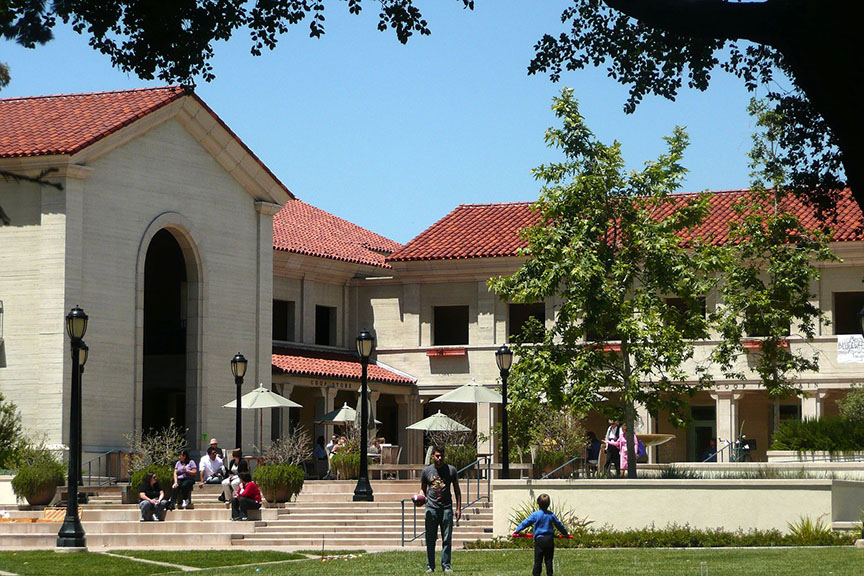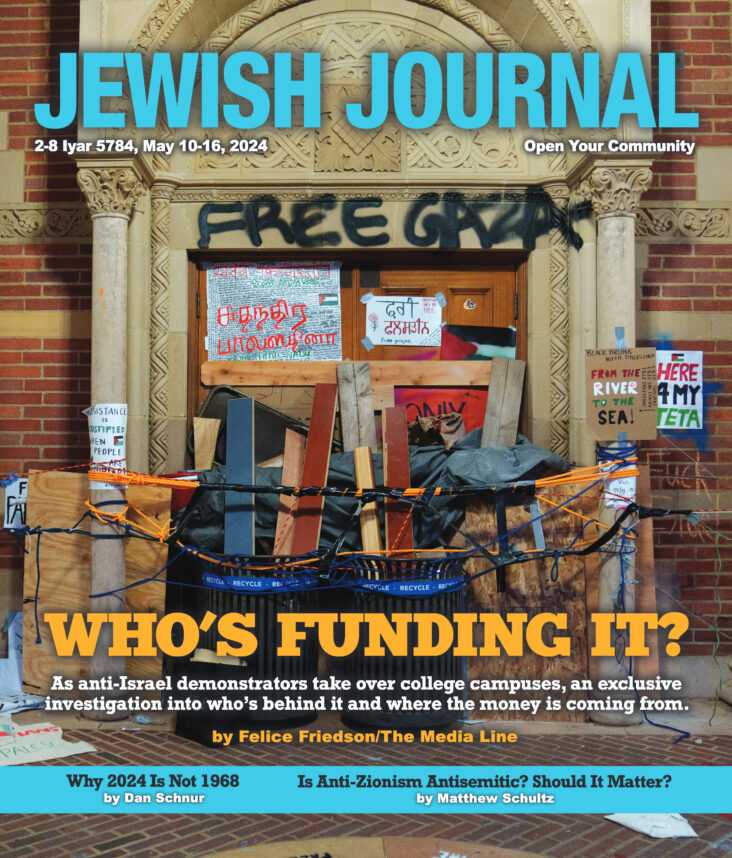“So what were my dying words?” Hallie Lerman laughs as she recounts the dream in which she was on her deathbed, surrounded by her husband and two adult daughters. “Not ‘I love you, or take good care of my future grandchildren.’ No. I said, ‘Don’t abandon Israel!”
Lerman, a birdlike, intense writer and photographer, laughs once more at the over-the-top fervor of her dream.
But then again even while awake, she speaks of the Jewish State with the kind of passion one might discuss a lover. The ardor is evident in her simple yet striking new show, “Pictures at an Exhibition,” now at Sinai Temple, her photographic valentine to Israel.
On a recent afternoon at Sinai, Lerman, describes how she began the show during the Iraq War last year.
“The press was so anti-Israel,” she says, scrunching her delicate hands into fists. “The country I knew was not what I saw on TV.”
So Lerman — who says she’s influenced by legendary photojournalist W. Eugene Smith and documentary street photographer Diane Arbus — decided to counter the images with images of her own. She perused the thousands of black-and-white photos she’s taken during more than 30 trips to the Jewish State and selected 50 she felt best “showed the breadth and scope of Israeli life, society, land and people.” She paired each image with pertinent text: “I tried to communicate the beauty and the struggle, the fight and the will … of this extraordinary and unique and profoundly personal country,” she says.
The pictures in her “Exhibition” are haunting: A soldier weighed down with army gear becomes a metaphor for the psychological burden of living in a besieged country; a crevice in a settlement wall looks like the view from a medieval fortress; a sunset in a vast, black sky reflects Lerman’s view of Israel as “my light in a world of darkness.”
OK, she says, pausing during an interview, so perhaps she’s drifting into over-the-top territory again. But she believes her feelings make sense, considering that she grew up in a Bible-Belt town where she keenly felt the sting of living in the Diaspora and what Israel can mean to such Jews.
As a young child in Evansville, Ind., on the Kentucky border, Lerman believed the slur “Rich Jew” was one word.
Nevertheless, Lerman felt fiercely proud of her heritage, courtesy of her strongly Zionistic family. Theodore Herzl had selected her Russian-immigrant grandfather as a delegate to the Zionist conventions of the early 20th century; Lerman’s Brooklyn-bred father learned his own lessons about the importance of a Jewish state while studying medicine in Nazi Germany.
“He saw the Jewish State as a complete miracle, and the key to the survival of the Jewish people,” Lerman recalls.
Her own epiphany came during the Six-Day War, when Evansville’s non-Jews suddenly regarded Jews as heroes, rather than as outsiders.
While hitchhiking around the country at 17, she tagged along on a Christian group tour and marveled: “I’m the Jew, and they’re visiting my country. Having grown up the outsider, it was a feeling of finally coming home.”
Because Lerman eventually married an American, she did not make aliyah. However, because she was “utterly, madly in love with the country,” she frequently visited with her camera in tow — including one memorable trip a month before the Yom Kippur War. During those late summer weeks in 1973, she hung out with her American-born cousin, Jacob Rayman, a 19-year-old army medic, who obtained a 24-hour leave from his base to see her one more time before she returned home. It was the last time she ever saw him.
A month later, her mother phoned with devastating news: Rayman had been sent on a virtual suicide mission to rescue colleagues trapped in a bunker in the Golan Heights. He had died in the first battle of the Yom Kippur war at a tiny outpost called Tel Saki.
Unresolved questions about his death eventually led her to create her acclaimed 2000 book, “Crying for Imma: Battling for the Soul of the Golan Heights” (Night Vision Press, $25), which combines interviews and photos of the soldiers before, during and after the melee. The title came from a soldier who said he cried for his mother during the battle.
The title of her new exhibit, “Pictures,” is deliberately vague. “I didn’t want it to include the word, ‘Israel,’ because I want non-Jews and unaffiliated Jews to see the show,” she says. Her tacit message is, “Don’t abandon Israel.”
“I want people to come fall in love with the country,” she says.
For more information about the show running through June13, visit






















 More news and opinions than at a Shabbat dinner, right in your inbox.
More news and opinions than at a Shabbat dinner, right in your inbox.